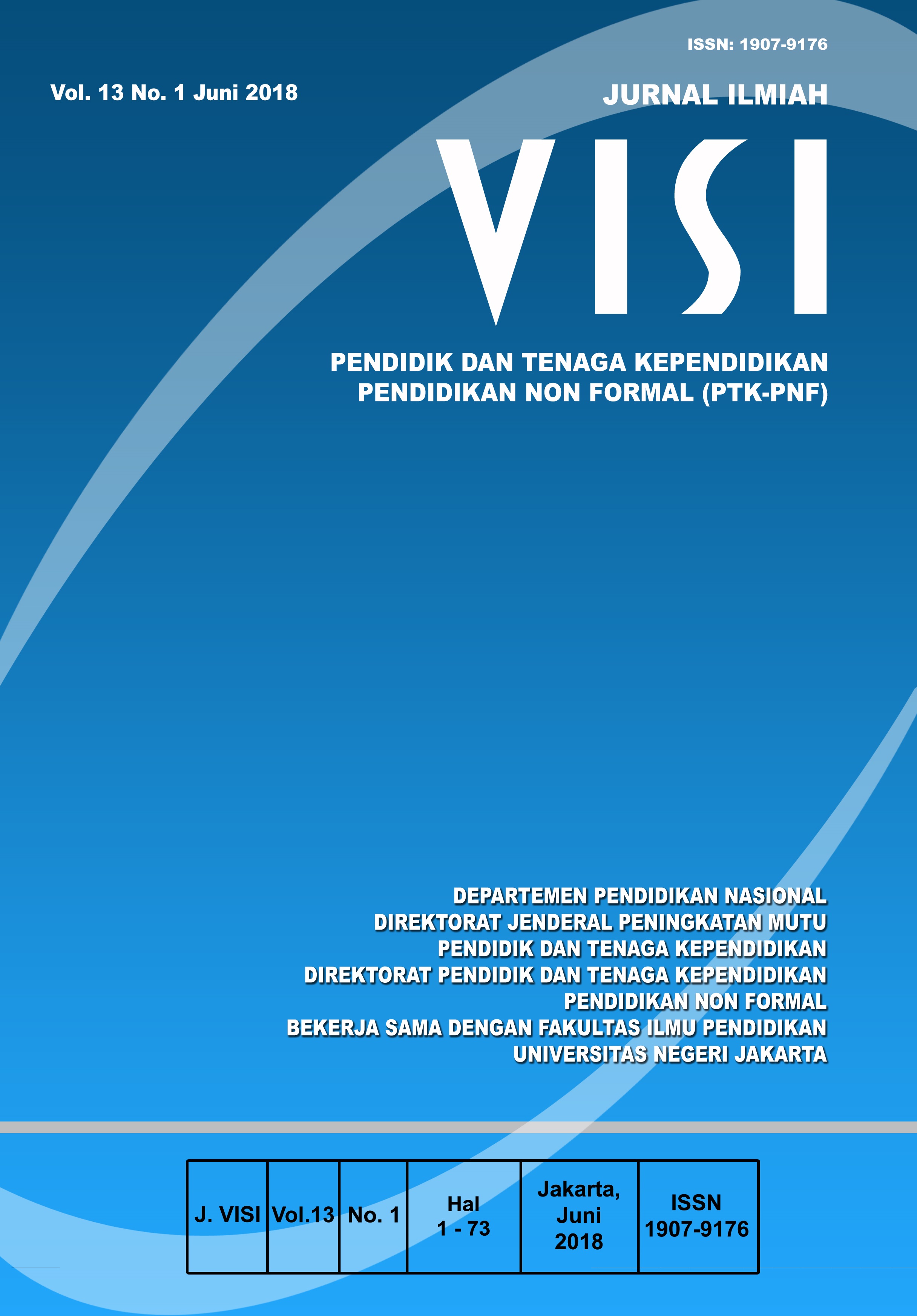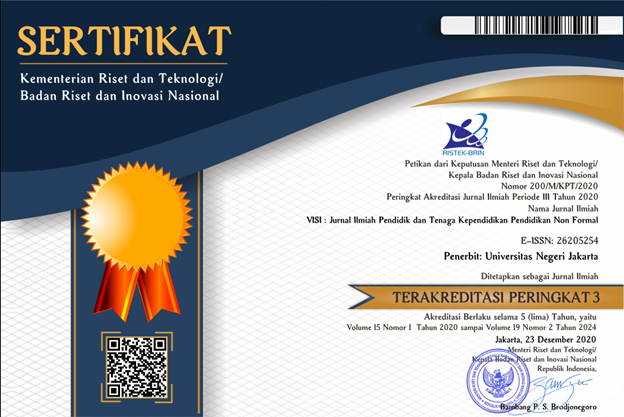ANALISIS TIPIKAL KEKERASAN PADA ANAK DAN FAKTOR YANG MELATARBELAKANGINYA
DOI:
https://doi.org/10.21009/JIV.1301.1Keywords:
violence, children, early-childhoodAbstract
This research based upon the rise of violence at children either physical, social, emotional, sexual, and ignorance form. Ironically, the early-childhood institutions that must be saved from violence action, showing symptom of this behavior. Based on that problem, this research analyzes the type of violence on children and the underlying factors, especially in early-childhood institutions. This research using a study case method and the subject of this research are two teachers and four student of early-childhood institutions in Bandung and East Bandung. The time to this research began at July until September 2016. The result from this research expected to generate the valid data that can be useful to prevent or handle the problem of violence at early-childhood institutions or the next level of educations. Besides that, this result can be used by the academics-practitioners in build a model or guidance of educations that can reduce the violence against children. For institution, this research can be used for developing the training or workshop in order to help institutions of educations or the government to prevent violence actions against children.
References
Agustin, M. (2008). Mengenali dan memahami dunia anak. Bandung: Lotus.
Alwasilah, A. C. (2015). Pokoknya studi kasus pendekatan kualitatif. Bandung: Kiblat Buku Utama.
Banks, R. (1997). Bullying in school. Diakses dari http://www.eric.ed/educational_researchjournal_article/downloads.pdf pada tanggal 27 Oktober 2008.
Bureau of Exceptional Education & Students Services. (2011). Child abuse prevention sourcebook for florida school personnel: A tool for reporting abuse and supporting the child. Florida: Florida Department of Education.
Coloroso, B. (2006). Penindas, tertindas, dan penonton: Resep memutus rantai kekerasan anak dari prasekolah hingga SMU. Jakarta: Serambi Ilmu Pustaka.
Elliot, M. (ed). (2008). Bullying, a practical guide to coping for schools, 3rd edition. London: Pearson Education in association with Kidscape.
Espelage, D.L. (2002). Bullying in early adolescense. Diakses dari http://www.athealth.com/Consumer/disorders/bullying.html pada tanggal 15 Juni 2007.
Gunawan, H. (2007). Tindakan kekerasan di lingkungan sekolah. Pikiran Rakyat. Diakses dari http://www.pikiran-rakyat.com pada tanggal 5 Juli 2007.
Hyman, I. A., & Snook, P.A. (1999). Dangerous schools: What we can do about physical & emotional abuse of our children. Philadelphia: Jossey-Bass.
Komite Perlindungan Anak Indonesia. (2015). Pelaku kekerasan anak tiap tahun meningkat. Diakses dari http://www.kpai.go.id pada tanggal 3 Maret 2016.
National Youth Violence Prevention Resource Center. (2002). Facts for teens: Bullying. Diakses dari http://www.safeyouth.org pada tanggal 5 Mei 2007.
Olweus, D. (1993). Bullying at school: what we know and what we can do. Malde, MA: Blackwell Publishing.
Saripah, I. (2010). Model konseling kognitif perilaku untuk memanggulangi bullying siswa. Disertasi tidak diterbitkan. Bandung: Sekolah Pascasarjana Universitas Pendidikan Indonesia.
Tower, C.C. (2003). The role of educators in preventing and responding to child abuse and neglect. US: Department of Health and Human Services Administration for Children and Families.
Whitney, I. & Smith, P.K.(1993). A survey of the nature and extent of bully/victim problemsin junior/middle and secondary schools. Education Research, 35(1), 3-25. doi:10.1080/0013188930350101
Yayasan Semai Jiwa Amini. (2008). Mengatasi kekerasan dari sekolah dan lingkungan anak. Jakarta: Grasindo.
Yunita. (2015). Gaya mengajar guru laki-laki di taman kanak-kanak. Tesis tidak diterbitkan. Bandung: Sekolah Pascasarjana Universitas Pendidikan Indonesia.
Downloads
Published
How to Cite
Issue
Section
License
Authors who publish with this Journal agree to the following terms:
- Author retain copyright and grant the journal right of first publication with the work simultaneously licensed under a creative commons attribution licensethat allow others to share the work within an acknowledgement of the work’s authorship and initial publication of this journal.
- Authors are able to enter into separate, additional contractual arrangementfor the non-exclusive distribution of the journal’s published version of the work (e.g. acknowledgement of its initial publication in this journal).
- Authors are permitted and encouraged to post their work online(e.g. in institutional repositories or on their websites) prior to and during the submission process, as it can lead to productive exchanges, as well as earlier and greater citation of published works.
- Users/public use of this website will be licensed to CC BY-NC-SA Creative Commons Attribution-NonCommercial-ShareAlike 4.0 International License









